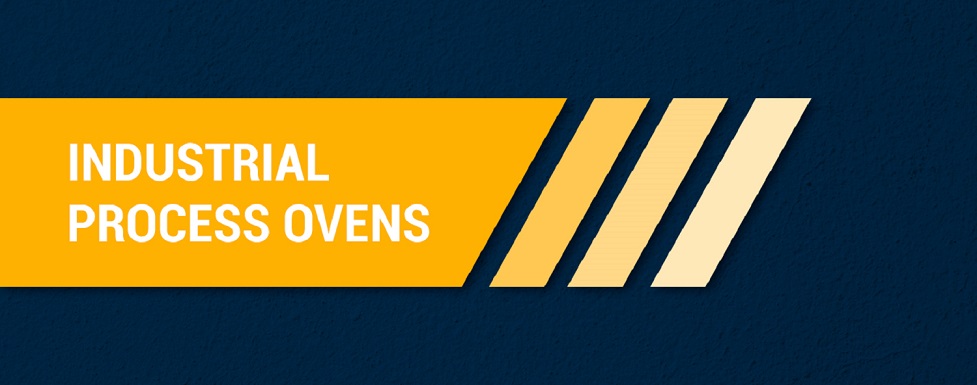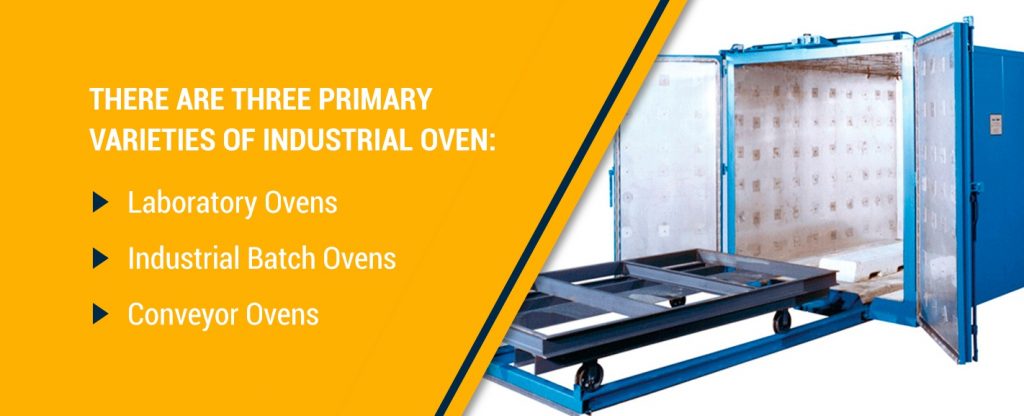
Breakdown of Industrial Process Ovens
Updated: December 22, 2023Regardless of the end product, manufacturing is a process comprised of many different steps, all carefully organized to create and assemble goods with uniform quality. It can be a limited or extensive operation, but almost all manufacturing requires the application of heat at one or multiple stages. For this reason, it’s essential to have the right thermal processing equipment, also known as industrial process ovens.
Finding the proper industrial ovens for your needs requires research and careful consideration. But if you know what to look for, you can ensure you purchase suitable equipment. With a high-quality oven and the correct application, you can improve your manufacturing processes. This guide will help you understand what industrial process ovens are, what the different types are and how they operate.
What Is an Industrial Oven?
Industrial ovens are chambers capable of heating objects to extremely high temperatures, similar to a kiln. Depending on the type of oven you choose, you can use them for a range of small and large volumes of products and a variety of treatments. They’re excellent for curing raw materials, removing moisture from products or elements, aging and more. Some of the specific applications often associated with process ovens include the production of electronics and food and processing chemicals.
The two main principles of the industrial oven are the heat sources and airflow patterns. Process ovens can obtain their heat from an electric, gas, steam, water or oil source, among others.
Additionally, there are also six primary types of airflow, which is essential to configure with product-loading. The six common varieties of airflow include horizontal/vertical, vertical/horizontal, vertical/top-down, vertical/bottom-up, full horizontal and full horizontal/vertical. These elements are what dictate how industrial ovens work.
In order to match your oven to your manufacturing operations, there are several factors you need to take into consideration. For one, the extent of temperature control. If it’s essential that you maintain a specific heat level, ovens with better control accuracy may be a well-founded choice. You may also want to select your oven type based on how it allows you to handle materials, safety regulations, initial expense versus return on investment (ROI) and any other elements that may affect your workflow.
Are There Different Types?
Since there are many different forms of manufacturing and products that require heating, there are also several types of industrial furnaces. An industrial oven needs to be compatible with your workflow to provide the best results possible. If you purchase a model that doesn’t suit your needs or cannot handle your product-loading, you may experience anything from undesirable results to more severe issues.
There are three primary varieties of industrial oven:
Laboratory Ovens
Laboratory ovens work best with specific chemistry and scientific applications, such as heating test samples or producing small-scale products in limited groups. The features of these ovens differ from others, as they include stainless steel interiors, a chemical resistant coating on the exterior components, positive latch doors, solid state controllers and contactors, and pressure release panels. Some companies may also offer extended warranties on these models.
In terms of temperature range, laboratory ovens typically cover a range from its ambient temp — or the temp of the environment in which it’s stored — approximately 650 degrees Fahrenheit. Their sizes also vary greatly. At its smallest, a laboratory oven can measure two cubic feet. At its largest, these models can be 32 cubic feet in size.

Industrial Batch Ovens
If you don’t need your oven for a laboratory-specific setting, industrial batch ovens can provide more space and higher temperatures. With these models, you’ll also benefit from the ability to heat process larger volumes of material or products in single batches.
They come in two primary types — shelf, or cabinet, ovens and truck, or walk-in, ovens. In terms of size, you can purchase them as small as three cubic feet. Batch ovens also have independent features, including adjustable ductwork, an aluminized steel interior, enamel painted exterior components, a UL listed control panel and a digital set-point controller. They can achieve operating temperatures from ambient to about 1,250 degrees Fahrenheit.
Conveyor Ovens
While conveyor ovens typically offer less flexibility than the batch models, they’re well suited for particular uses, as they have designs compatible with specified production rates or materials. However, they do have the same heat range, reaching a maximum of 1,250 degrees Fahrenheit. They also differ in that they operate with various heat zones, either continuously or on an indexing basis.
In general, conveyor models are best for automated production lines where you’re treating small or medium-sized products in large volumes. Depending on the products, production volume and ideal working temperature, you’ll have a different type of conveyance system.
What’s the Process of Industrial Ovens?
When purchasing the proper oven for your needs, it’s essential to consider the oven’s size, the temperatures it can reach, the fuel source it uses to heat up and any other basic details. But, you also need to consider the elements surrounding your process needs. Depending on your intended uses for the oven, such as curing paints or aging products, you may need a specific kind of industrial oven.
Once you have the right model for your needs, you can get to processing batches. There are four primary factors that go into using an industrial oven:
- Loading your batch: When you’re ready to begin using your oven, it’s essential to have the proper product load. To raise the product temperature to the desired level, you have to consider the heat your load requires, losses from the exhaust system and wall and heating the oven to the ideal temperature prior to loading.
- Heating the oven: With the right equipment, you can ensure your products reach the required temperatures and remain there for the duration of the process. You can reach your required set-point in one of two ways. Either you can load your batch, set the desired temp with a set-point controller and run the oven until it reaches it, or you can use a ramp or soak programmer, which allows you to create several set points as well as plateaus.
- Regulating temperature: As the oven heats your product, you have to ensure the temperature remains properly regulated. Soak times are a helpful technique, as they involve using a thermocouple to measure the temperature variance between the product and the surrounding oven space.
- Cooling down: When the process is complete, you need to cool down the oven. You’ll need to find a way to properly exhaust the hot air while allowing the room temperature air to enter the oven and circulate. This process can be manual, or you can control it with a programmer.
Contact Finishing Systems
When you need a reliable industrial furnace, Finishing Systems has you covered. With over 45 years in the business and experience working with some of the top companies in construction equipment and vehicle manufacturing, we lead the metal finishing industry. By partnering with us, you’ll have access to our expansive product lines and professional services, including custom-designed finishing solutions and our experienced team of professionals.
Improve your finishing process with Finishing Systems — contact us to get started or for more information.
